Why You Should Stop Feeding Your Baby From Trendy Little Food Pouches
This story is part of a series on ocean plastics.
For the over-stretched parent who doesn’t have time to puree plums or soak grains overnight, portable plastic packs jammed with organic and healthful ingredients are a godsend.
On-the-go moms can just twist off the cap and hand a pouch of blueberry flax and oat to a hungry baby to suck on by himself. No spoon or spoon skills required.
While these packs are pricey ― a 4-ounce pouch can cost north of $2 ― families are willing to fork over the funds for the convenience factor. But this convenience comes with another price: Most of these plastic pouches can’t be recycled and are destined for landfills ― or worse, the oceans. The demand is growing even though reasonably priced alternatives are available that can be used over and over again.
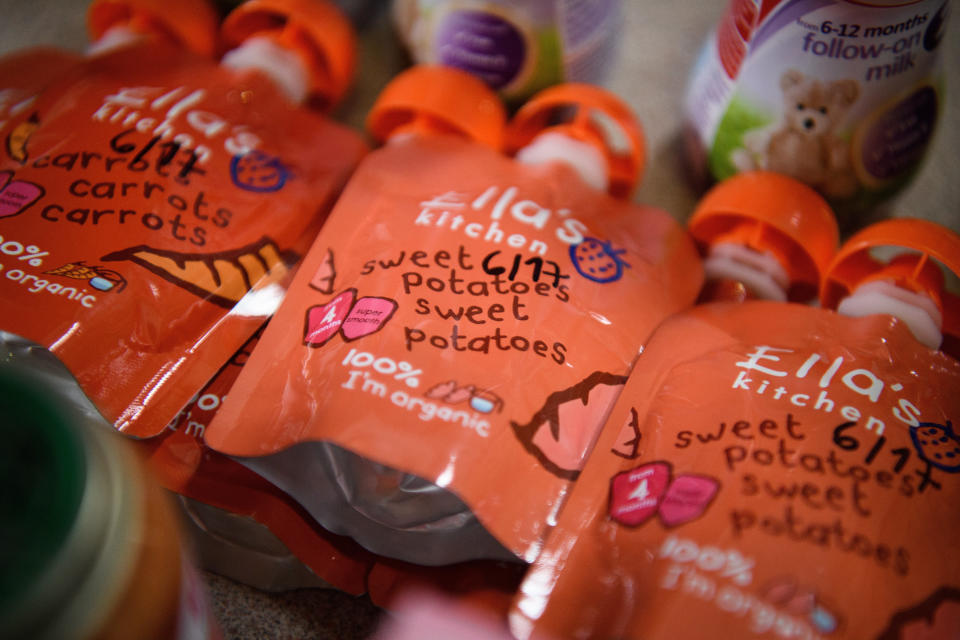
The problem with the disposable pouches is that they’re made from multiple layers of materials and the recyclable components can’t be separated out, said Brent Bell, vice president of recycling at Waste Management, the largest residential recycler in North America.
Empty food packs and other types of trash end up in the ocean due to a mix of mismanaged trash disposal and littering. When a person litters, for example, that item can easily blow into a storm drain, travel through sewer pipes and eventually land in waterways.
Stuffing loads of unusual and healthful foods into plastic casings isn’t sitting well with environmentalists.
Related...
There's A Huge Problem With Kids' Toys That No One's Talking About
9 Life Hacks To Help You Break Up With Plastic
Here's How Long Your Trash Will Hang Around After You're Dead
This Refugee Is Building Homes Out Of Plastic Bottles
“There’s definitely a push for clean eating both for kids and grown-ups,” Lindsay Gallimore, a mother of two who blogs about green issues, told HuffPost. “But all the buzz words that are associated with a ‘greener’ lifestyle are packaged into a packaging that’s not green at all.”
If the baby food industry doesn’t come up with a solution soon, the amount of plastic piling up from these products is only going to grow at an explosive rate.
In 2015, sales from baby food pouches reached $45 million. That was up from $8 million in 2010, according to a report from the Freedonia Group, a market research firm.
The demand for this niche product is increasing as oceans are being overloaded with plastic.

By 2050, experts estimate oceans will have more plastic than fish (by weight). Plastics are believed to threaten at least 600 different wildlife species, according to the Ocean Conservancy. When plastic reaches the landfill, it can take up to 1,000 years to decompose and can leak pollutants into the soil and water.
While plenty of plastic products are harming the environment, activists take specific issue with baby food packs because a number of convenient and eco-friendly alternatives exist, even for time-strapped parents.
“I can’t get everyone to use washable menstrual pads. I certainly can’t get everyone to use cloth diapers,” Gallimore said. “Feeding your baby healthy purees could happen in so many other ways that don’t require the little squishy packs.”
Gallimore likened the advent of plastic baby food packs to the K-Cup phenomenon. While some of these one-time-use coffee pods are technically recyclable, the process is so painstaking that consumers are more likely to throw them in the trash after using them for a few seconds. In fact, John Sylvan, the inventor of the Keurig machine, said he regrets the innovation.
“It was along the same lines as K-Cups for coffee,” Gallimore said of the similarities between the coffee pods and plastic baby food packs. “We were doing fine without them before.”
Love HuffPost? Become a founding member of HuffPost Plus today.
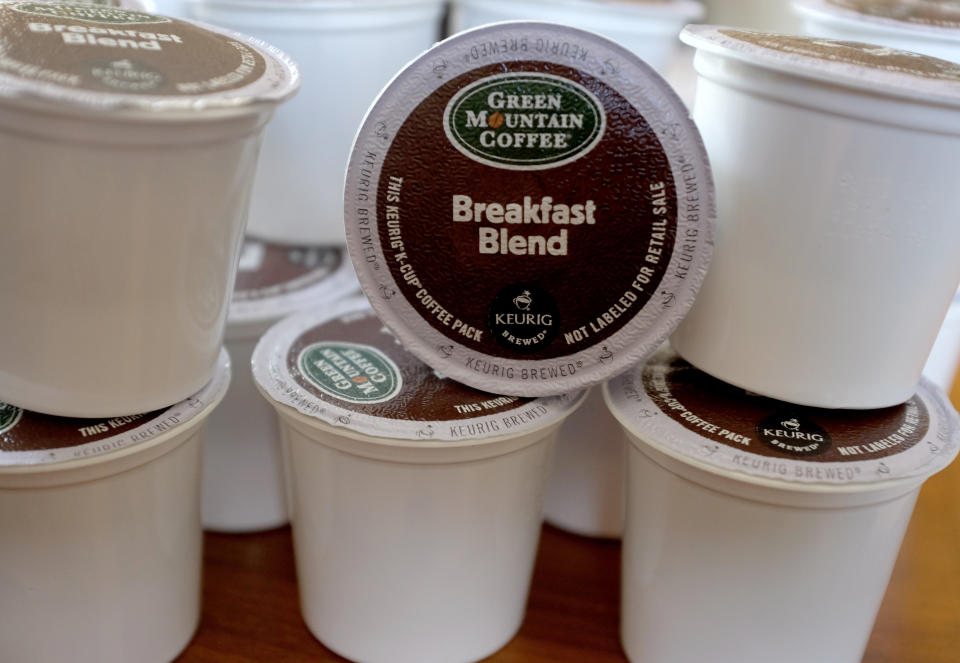
Before the plastic squeezy packs hit the market, baby food was mostly packaged in glass jars, which are recyclable, reusable and cheaper. Responding to the surge of plastic packs, a number of companies have developed receptacles that work similarly, but can be washed and used more than once.
Rhoost, for example, manufactures 4.5-ounce plastic pouches that can be filled with pureed food repeatedly and washed by hand or in the dishwasher. They run $12.99 for a four-pack.
Though most of the disposable plastic packs can’t be recycled, some experts say there is some merit to them.
They usually require fewer raw materials to produce than recyclable materials, which results in net energy and greenhouse gas emissions savings, Bell, of Waste Management, said. The packages are also designed in such a way to reduce food waste, which is where the “greatest environmental savings are realized,” he said.
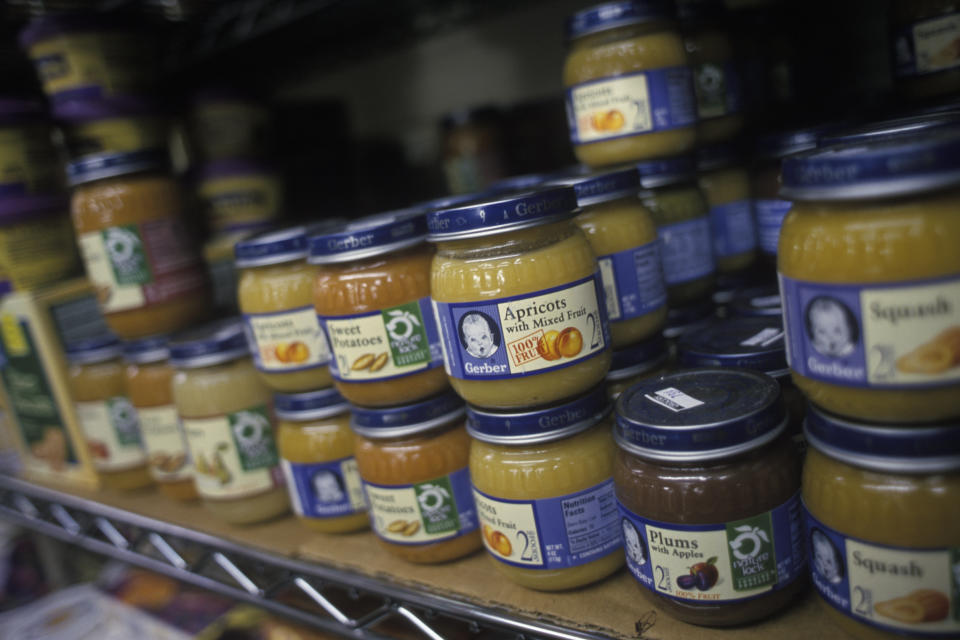
Hain Celestial ― the company behind Earth’s Best and Ella’s Kitchen baby food ― is reducing its plastic footprint by partnering with recycling company TerraCycle. After consumers finish with their packs, they can download free shipping labels and send the waste to TerraCycle.
Since the products can’t be separated, they’re shredded and melted into a plastic and pelletized. That material is then sold to manufacturers who can use recycled plastic in their products, Lauren Taylor, TerraCycle’s global director for communications, said.
While this process is a start, it’s not capturing many plastic packages. Celestial sells about 20 million pouches annually in the U.S. alone, said Jared Simon, vice president of marketing for Better-for-You-Baby at Hain Celestial United States. TerraCycle has collected about 3.3 million pouches in the U.S. and the U.K. since it started doing so in 2013.
Even if those numbers increased, environmentalists likely still wouldn’t be satisfied.
“Recycling is awesome ― it’s great. But recycling is not the be all and end all of environmentalism. It’s expensive and it’s not a perfect solution.” Gallimore said. “Instead, how can we replace what we’re using and throwing away with something that we don’t throw away?”
Also on HuffPost
Reduce use of all plastic products

“Someone might buy a new iPhone and say, well, since I recycled my old phone with Apple, I’m all good. But Apple doesn’t tell you just how little of that iPhone actually gets recycled,” said Adam Minter, author of Junkyard Planet: Travels in The Billion-Dollar Trash Trade. “People need to stop thinking of recycling as a ‘get-out-of-jail-free’ card. You haven’t actually done anything good for the environment. You’ve just done something less bad.” (More on that below.)
“If we really want to deal with the waste problem we’re facing, we need to think deeper about the nature of consumption itself,” Minter said.
Don't litter
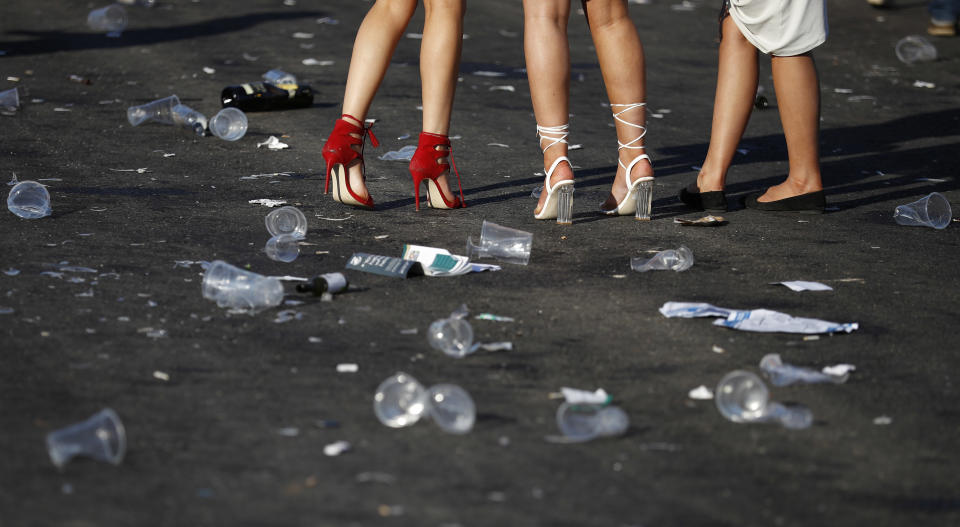
According to Jambeck, mismanaged waste like litter is the number one cause of plastic garbage is the world’s oceans. That plastic bag that got caught in a breeze could end up in a storm drain; that empty plastic bottle left on a beach could get carried out by a tide.
Ocean Conservancy recommends always “taking five” whenever you leave a space to ensure that you’ve collected all your trash and disposed of it properly.
Plastic bags, which often can’t be recycled (more below), are especially prone to becoming litter as they are easily carried away in the wind (yet another reason to not use them!). If you must throw one away though, be sure it’s balled up or weighed down so it can’t easily float away.
Recycle when you can, and do it right
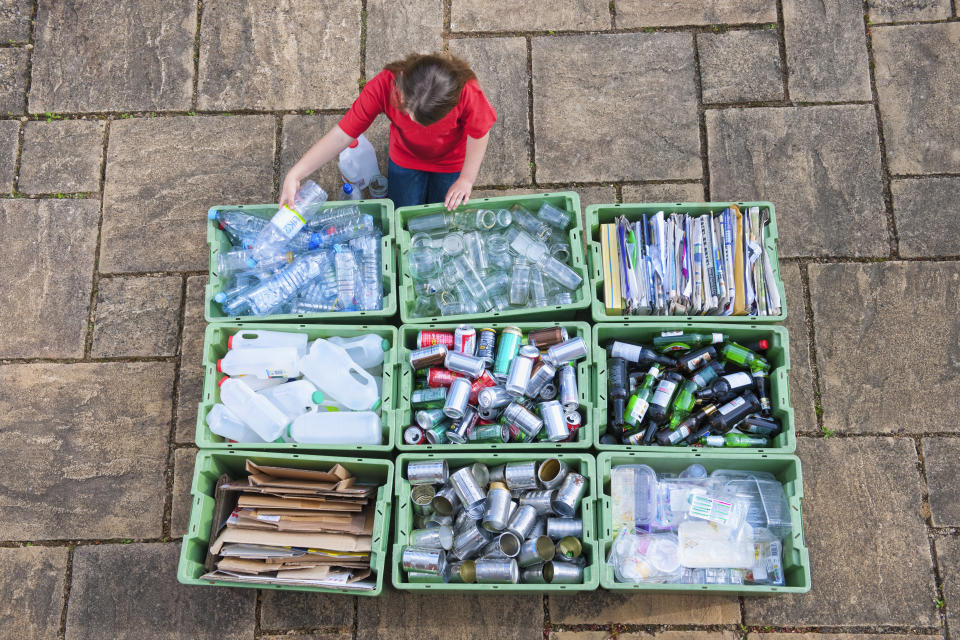
The reasons for these low numbers are manifold, said Darby Hoover, a waste management specialist with the Natural Resources Defence Council. But generally, it boils down to two major problems: one, there are many different kinds of plastics and not all of them are easily recycled; and two, consumers often aren't aware of these differences and therefore don't dispose of plastics in the best way.
“You know that little triangle on plastic products? The little triangle is not an indicator that something is recyclable. Instead, it’s merely a designation — numbered 1 to 7 — of what kind of plastic it is, what polymer that plastic is,” explained Hoover. A number 1, for instance, indicates that the item is made of Polyethylene terephthalate (or PET, for short), a material typically used to make bottles and microwaveable food containers; while a number 2 indicates high-density polyethylene, the stuff plastic grocery bags are usually made of. The most complicated designation is number 7 which indicates all other plastics, including products with a mixture of various plastics in them and also compostable plastics.
Recyclers use these numbers to determine which items can be recycled at their facility and which can’t. Different kinds of plastics typically can’t be recycled together, and many facilities won’t accept certain types of plastic at all, like styrofoam, vinyl and plastic film products like plastic bags and cling-wrap (these products have been known to gum up recycling equipment).
To add to the confusion, local municipalities across the U.S. have differing rules when it comes to recycling plastics. Some might accept type 7 plastics, for instance, but others will not.
“No matter where you live, you have to check the local municipality for their rules,” said Hoover, who recommended reviewing your local city or town website for more information. You also have to continue checking in, she added, as these rules often change without much warning.
Choose non-synthetic fabrics when possible
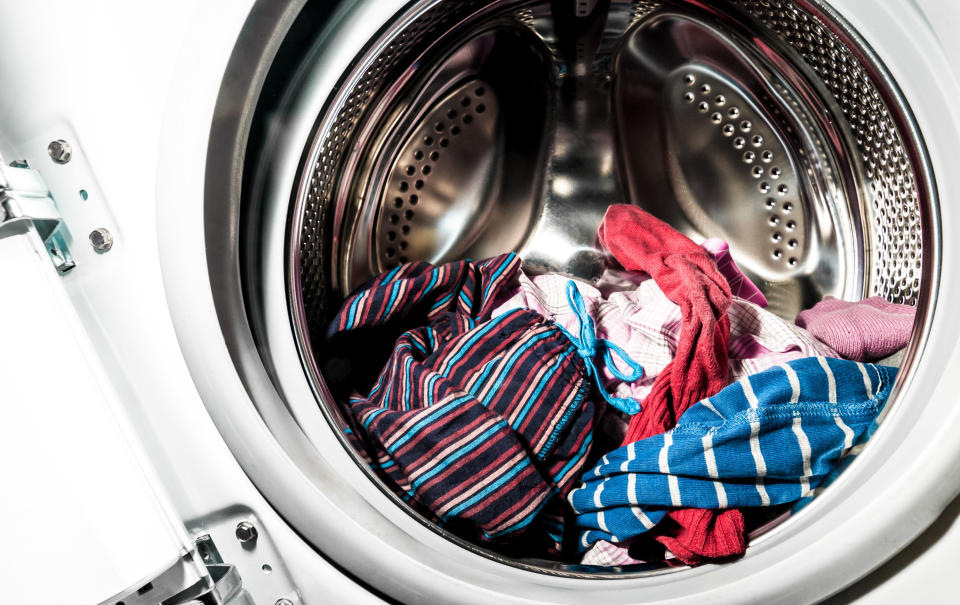
A single cycle of a washing machine could release more than 700,000 microplastic fibers into the environment, concluded one 2016 paper.
Natural fabrics to consider instead include organic cotton, wool, flax and hemp.
Say no to microbeads
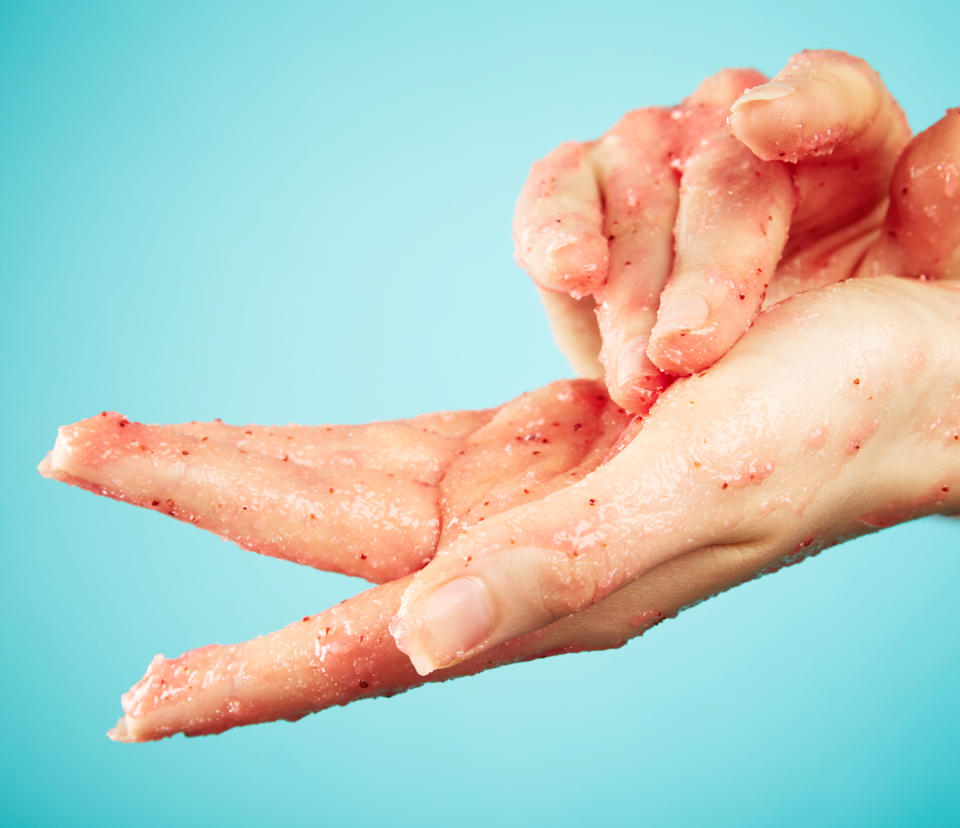
Recognizing the potential risk that microbeads pose to marine environments and possibly human health, several countries, including the U.S. and the U.K., have introduced bans of the substance.
Many of these bans have yet to be enforced, however, and some are limited in scope, so remain vigilant when purchasing products that could have microbeads in them (look out for terms like “exfoliator,” scrub,” “buff” and “polish”).
Visit the Beat the Microbead website to learn more.
Participate in clean-up efforts

In 2017, the cleanup event is planned for September 16 ― but you don’t have to wait till then to do something. Ocean Conservancy has a DIY toolkit to help you organize clean-ups in your own community.
Support plastic bag legislation

Reducing your use of plastic bags is one important way to mitigate this waste problem; but according to Jennie Romer, a New York City lawyer and founder of the website Plastic Bag Laws, another way to make a big impact is to support local, state and federal single-use bag legislation -- specifically legislation that supports the reduction of all kinds of single-use bags including plastic and paper.
Across the country, there are already many ordinances in place related to single-use bags. Last year, California became the first state to ban single-use plastic bags at all retail outlets, and in 2010, Washington D.C. implemented a 5-cent fee for all single-use bags, both plastic and paper. Cities and towns in Texas, Hawaii, Massachusetts and Colorado, among other states, have also embraced single-use bag legislation in some form or other.
For most of the nation, however, plastic and other single-use bags remain widely available. According to Romer, it’s extremely challenging to pass a plastic bag law — or even keep one in place (New York City is a prime example) — due to fierce opposition led mostly by lobbyists from the petroleum and plastic industry. “They fight bag regulations tooth and nail,” Romer said. “And their resources far outweigh that of the volunteers and grassroots community groups that are leading this fight.”
Preliminary evidence suggests that single-use bag legislation can be very effective in reducing waste. In Ireland, for instance, where a plastic bag tax was introduced in 2002, plastic bag use reportedly dropped by more than 90 percent in just a few weeks. In San Jose, California, a 2011 plastic bag ban resulted in a reduction of plastic litter by “approximately 89 percent in the storm drain system, 60 percent in the creeks and rivers, and 59 percent in City streets and neighborhoods,” according to a city report released almost a year after the ban was put in place.
Find out more about plastic bag legislation around the country and how you can get involved by visiting the Plastic Bag Laws website.
Support companies that are thinking of out-of-the-box solutions to reduce, reuse and recycle plastics
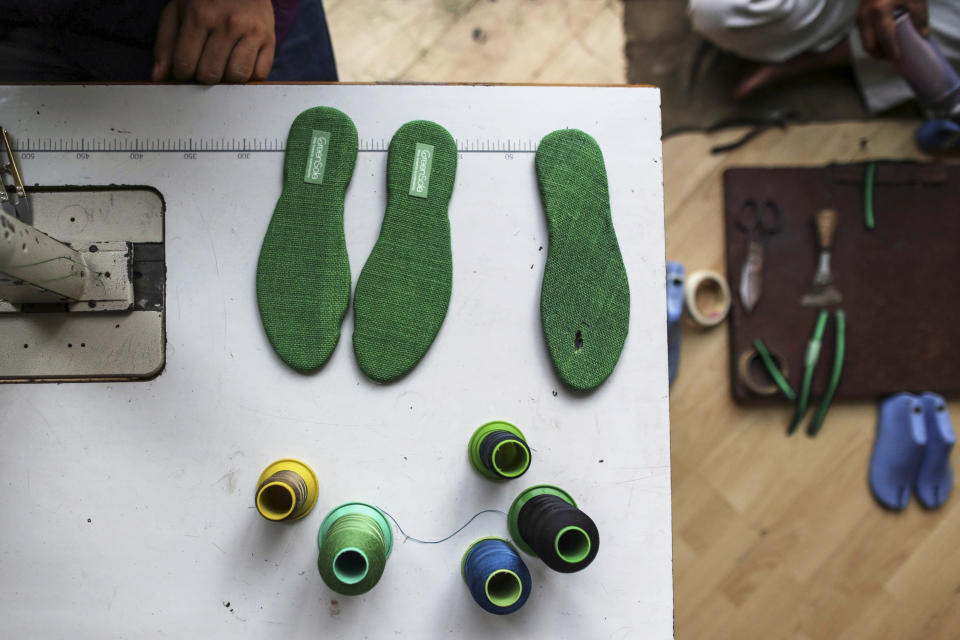
They might be rethinking product design, like this deodorant brand with its reusable, refillable containers; or incorporating recycled materials into their goods, like activewear companies that are turning plastic bottles into clothing or social enterprises like Greensole (pictured) that recycles old shoes into new ones.
There are also companies out there that are attempting to reduce waste across their entire value chain. Take Dell, which is recycling old computers into new ones as part of its closed-loop recycling supply chain. The company has also started harvesting ocean plastics to turn it into packaging material.
Consider also supporting green groups like 5Gyres, Ocean Conservancy and The Ocean Cleanup, which are leading the fight to clean up the world’s oceans.
Engage your family and friends

“This is a critical issue that’s tied up in so many other environmental concerns,” said Minter. “Yet people seem to have an aversion to it. They just don’t take much of an interest. Where’s the Paris landfill conference? You don’t see environmental groups flying celebrities into anywhere to talk about waste.”
The dialogue can begin in your own home and among your own friends. Start engaging your loved ones and your community on this important issue.
Track your progress
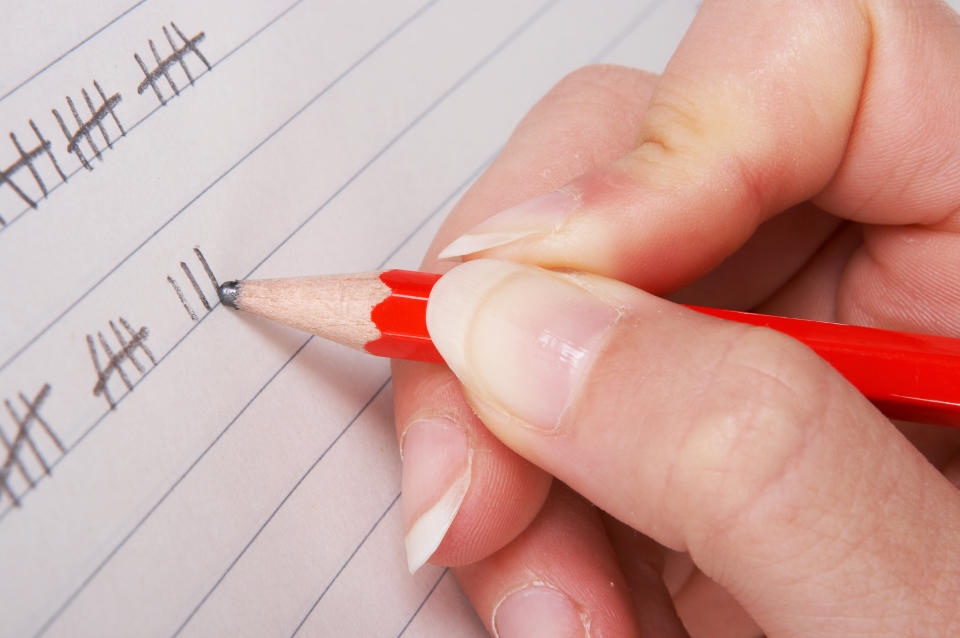
Ocean Conservancy also has a Clean Swell App which lets you track your beach cleanup efforts. It lets you share your progress on social media and to submit data directly into a global ocean trash database.
This article originally appeared on HuffPost.

